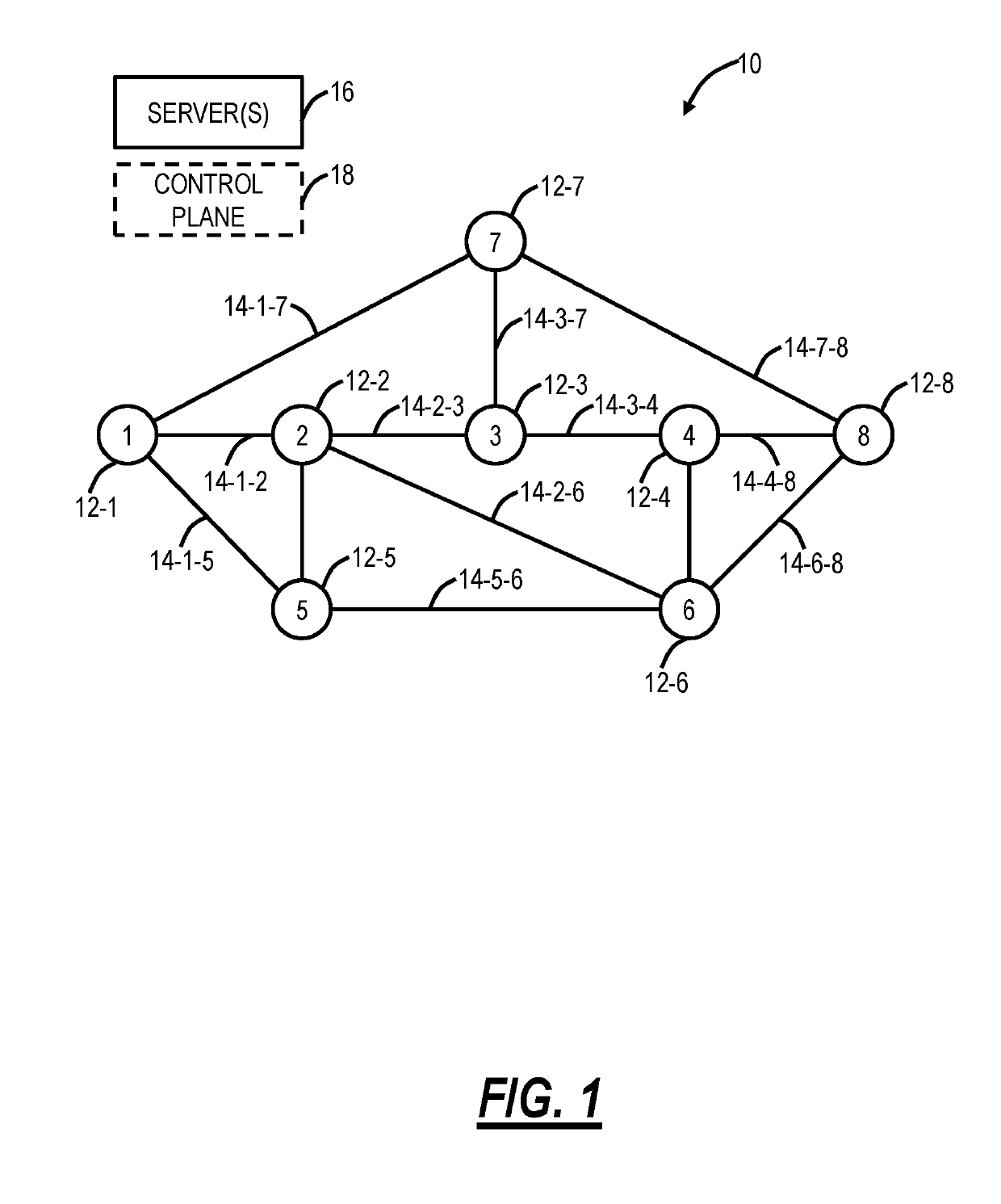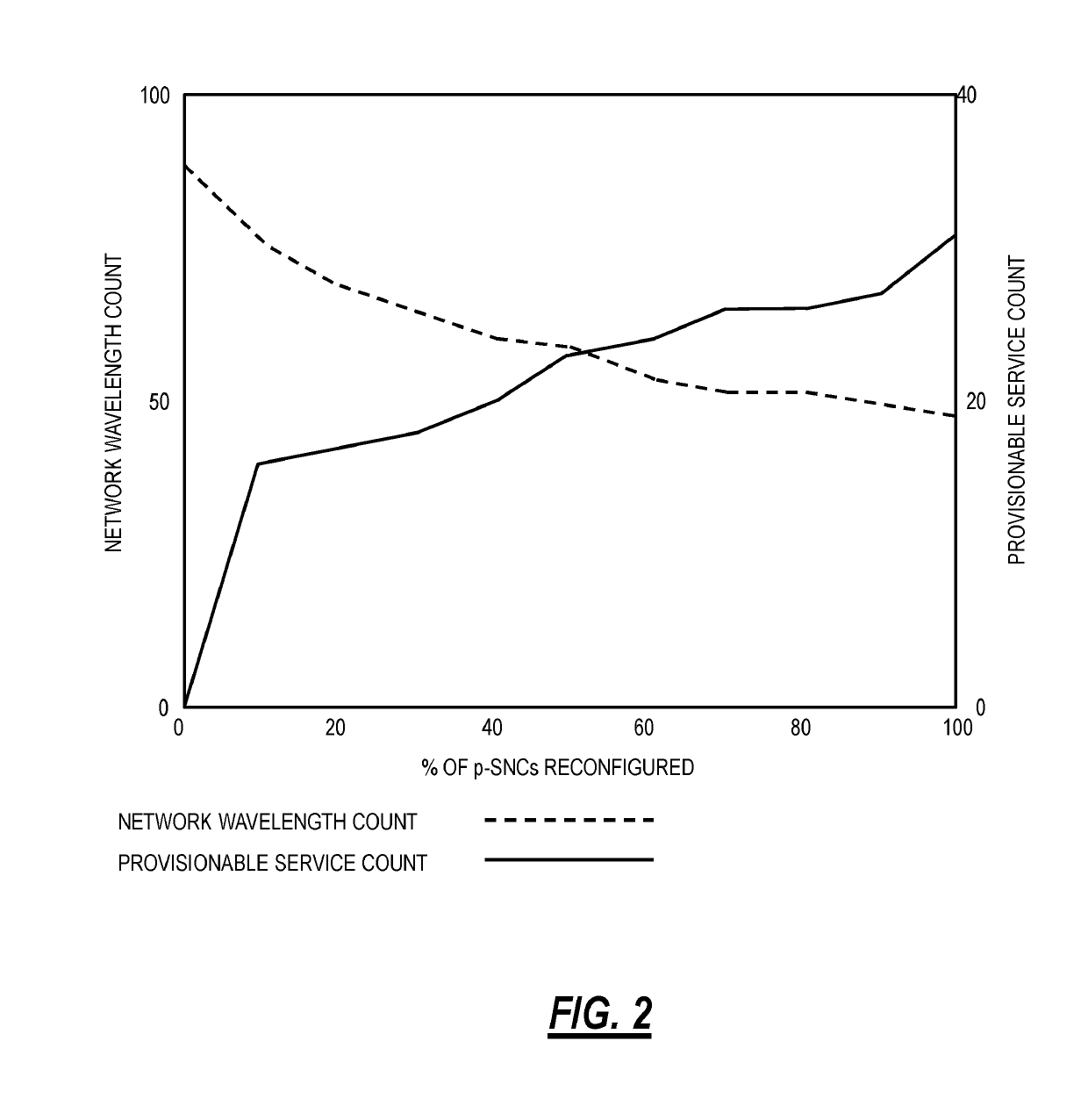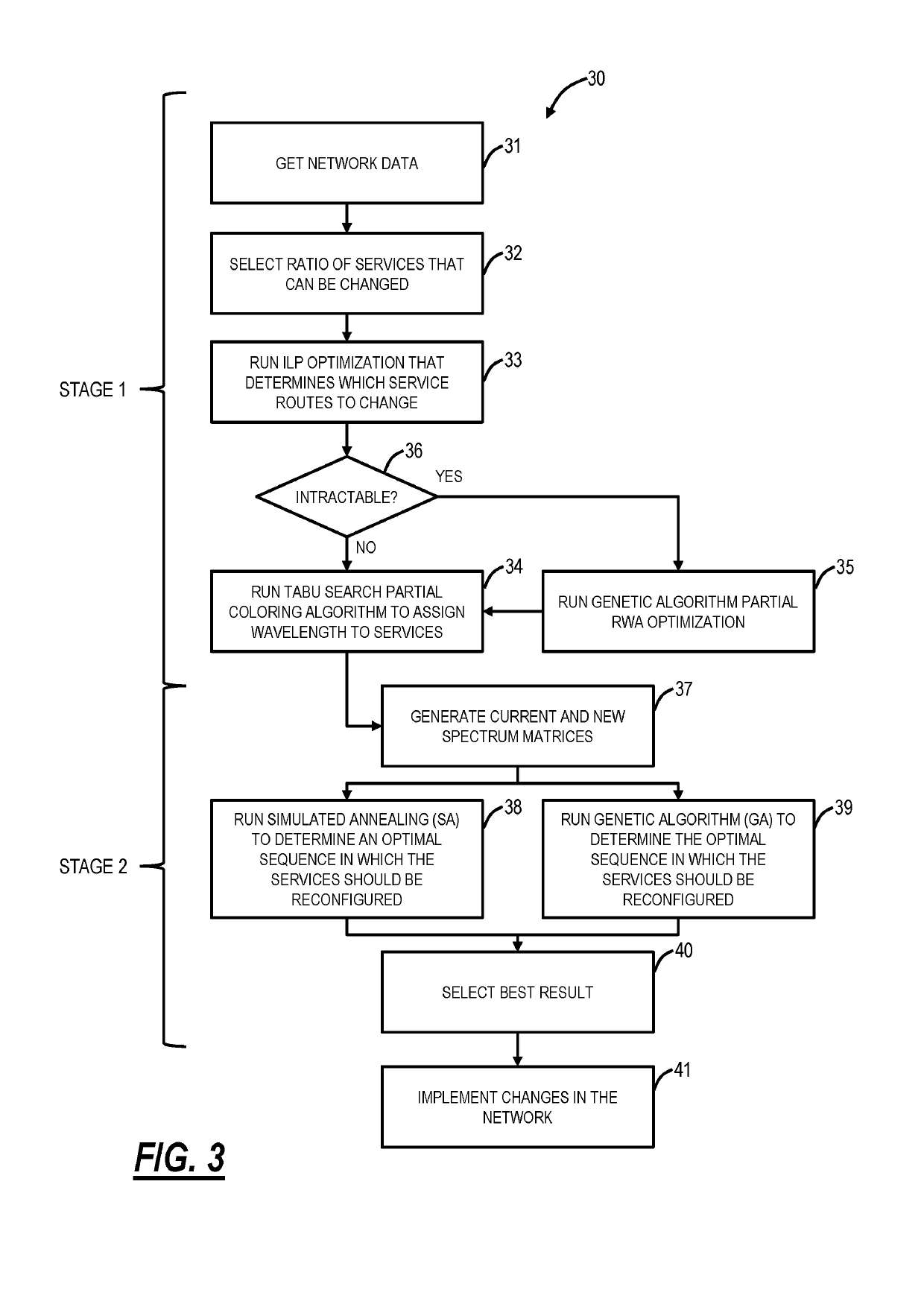Optimal partial reconfiguration of spectrum in optical networks
a spectrum reconfiguration and optical network technology, applied in the field of optical network systems and methods, can solve the problems of large unbounded implementation costs and the limitation of most conventional rwa and rsa algorithms, and achieve the effect of providing solutions for a small to medium network siz
- Summary
- Abstract
- Description
- Claims
- Application Information
AI Technical Summary
Benefits of technology
Problems solved by technology
Method used
Image
Examples
operational examples
[0077]The partial optimization process 30 was implemented on four example networks, referred to as networks 1, 2, 3, 4. These networks have the following characteristics in Table 4.
[0078]
TABLE 4Network topologies.# nodes# Total # ofWavelength Name(ROADM)linksp-SNCsCountTopologyNetwork 11420 9124InterconnectedmeshNetwork 2213821035InterconnectedmeshNetwork 3244727654InterconnectedmeshNetwork 4543 437 70252Interconnectedmesh
[0079]Table 5 shows the results of the first stage of the partial optimization process 30, which for each considered p-SNC ratio, shows the minimum wavelength count that can be attained across all the p-SNCs of the network (table 4). For each network, the performance of the ILP-TS algorithm and GA-TS approach is provided. A p-SNC ratio of 0% corresponds to the current state of the network, while a p-SNC ratio of 100% is equivalent to reconfiguring all p-SNCs.
[0080]For the networks 1, 2, 3, the GA-TS approach is either as good or better than the ILP-TS approach, as ...
PUM
 Login to View More
Login to View More Abstract
Description
Claims
Application Information
 Login to View More
Login to View More - R&D
- Intellectual Property
- Life Sciences
- Materials
- Tech Scout
- Unparalleled Data Quality
- Higher Quality Content
- 60% Fewer Hallucinations
Browse by: Latest US Patents, China's latest patents, Technical Efficacy Thesaurus, Application Domain, Technology Topic, Popular Technical Reports.
© 2025 PatSnap. All rights reserved.Legal|Privacy policy|Modern Slavery Act Transparency Statement|Sitemap|About US| Contact US: help@patsnap.com



